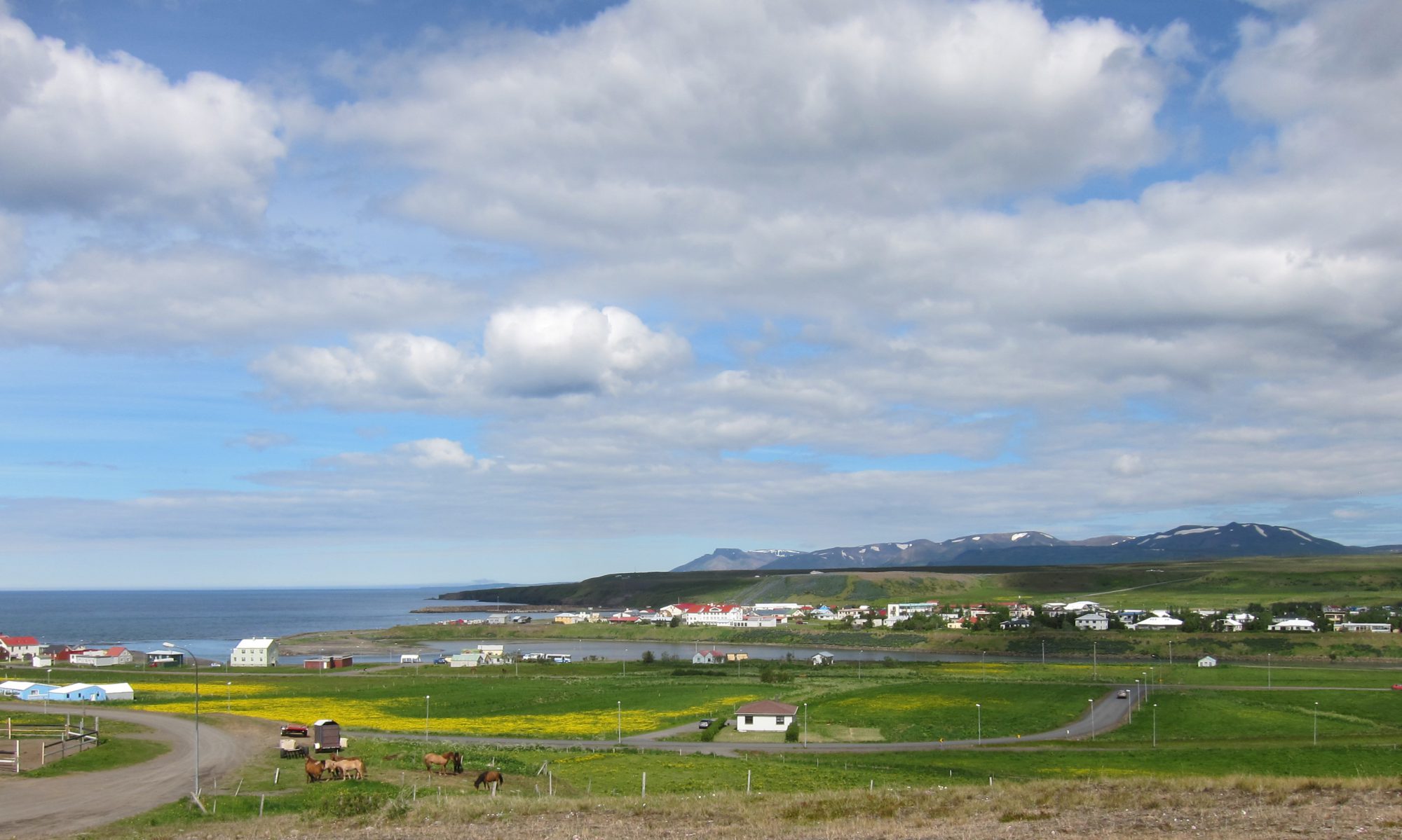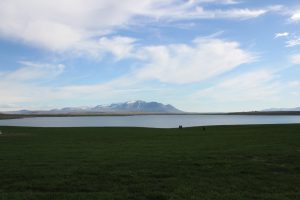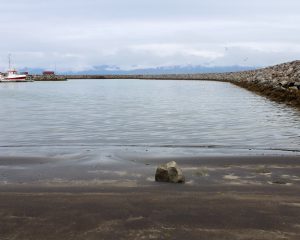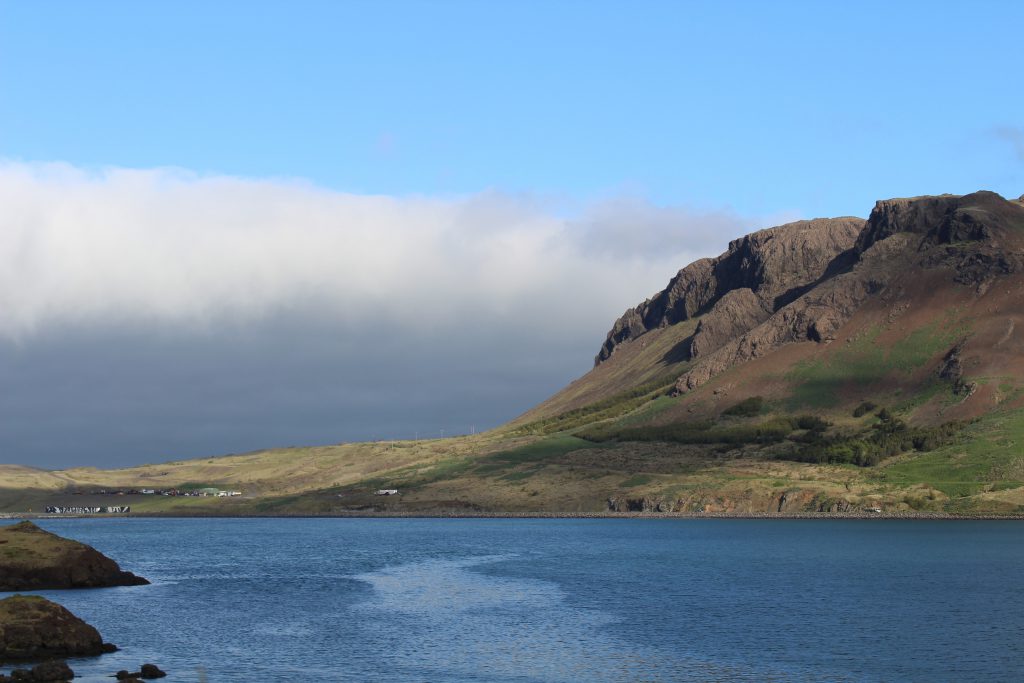During the open ceremony for the knitting festival in Blönduós (June 8th to 10th) there was a demonstration of the traditional Icelandic costumes collectively known in Icelandic as Þjóðbúningurinn. Aspects of these costumes date as early as the 16th century, although they regained popularity in the 19th century as an essential symbol of Iceland’s independence from the Danish.
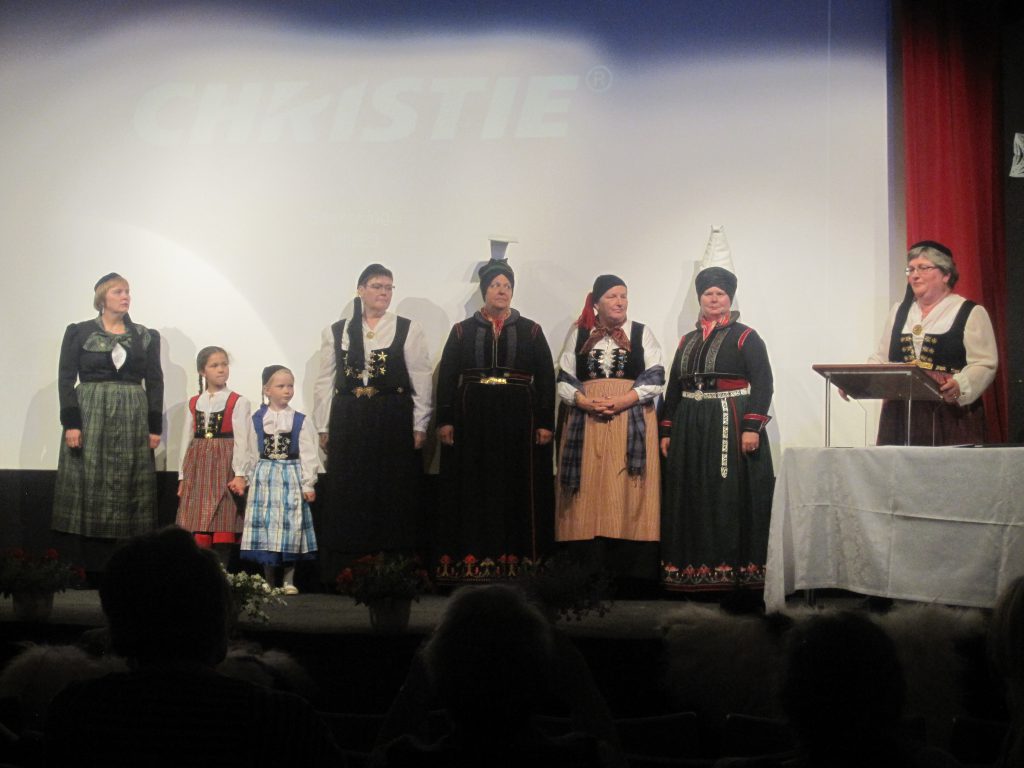
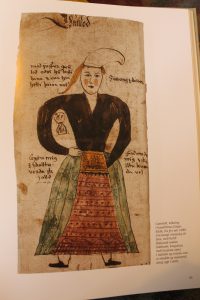
Although the opening ceremony demonstration was entirely in Icelandic, it showed the complexity of the various outfits as the women took of their jackets to show the detail on the backs and metal ornamentation. This complexity sparked my interest in doing more research on the national costume and its variety.
A trip to the library led to me a few books (mostly in Icelandic) on these various costumes, showing drawings from around 1680 that show a variant of the headdress faldur (Helgadottir 95).

On June 17th, the Icelandic National Day, we saw more examples of these costumes, such as the Peysuföt (pictured above).
The most informative outing in relation to the Icelandic costume occurred on June 22nd on a fantastic tour of the Textile Museum in Blönduós by museum manager, Elin Sigurdardóttir. She explained in detail the differences between the costumes and the changes that occurred in the 19th century.
The Icelandic costumes can be divided into five different styles:
Falbúningur– dates from the early 18th century. It includes the headdress faldur, embroidered skirt, apron, shirt, bodice, jacket, decorative collar, handkerchief and neckerchief. The silver chains and embellishments were called kvensilfur, and the amount was often in relation to the woman’s wealth and status. The faldur later changed into two forms, the krókfaldur (the curved headdress with a smaller point at the top) and the spaðafaldur (with a splayed top and smaller bottom).

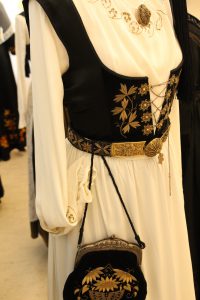
Upphlutur– (18th and 19th century) originally just the name of the bodice underneath the jacket as part of the falbúningur, this eventually evolved into its own popular variation. Elin told us that the upphlutur is the most common of the Icelandic costumes. It is characterized by the white sleeves and the collar. In 1907, the upphlutur became the independent festive costume, dating from a state visit with the Danish King. It is also usually worn with the knitted or velvet cap and tassel.

Peysuföt– became an independent costume at the end of the 18th century. It features a similar skirt apron and cap as the upphlutur. Traditionally this skirt can be made from tog, the long-haired overcoat of Icelandic sheep. The most characteristic aspect of the peysuföt is the large single or double bow, decorated by a brooch. In later versions, the bow is replaced by a silk scarf.
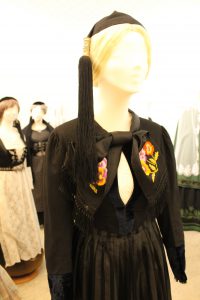
In the 19th century, Sigurður Guðmundsson designed two new costumes that became symbolic of Iceland’s independence, the skautbúningur and the kyrtill.
Skautbúningur- designed in the 19th century as a variant to revive the earlier falbúningur, this costume uses mostly dark fabric, with bright floral embroidery. Elin went on to explain that the lavish headdress, called skautfaldur, was meant to represent the Icelandic landscape; the mountains, glacier and sun.
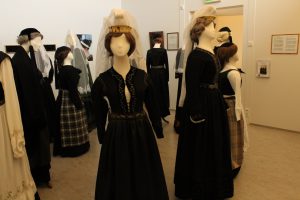
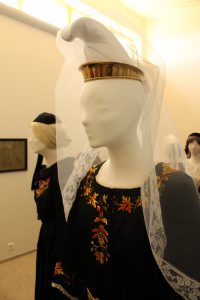
Kyrtill- designed in 1870, Guðmundsson made this costume much more light-weight using also lighter colours. Later it developed into other darker colours such as black, blue or green. The kyrtill and skautbúningur could also be worn with a möttull, a mantle made from black wool and trimmed with velvet or fur.

These costumes are extremely ornate and beautiful. The detailed embroidery and knitted accessories showed the extensive care to detail that is worthy of great admiration. Thank you, Elin and the textile museum, for your thorough explanation and tour!
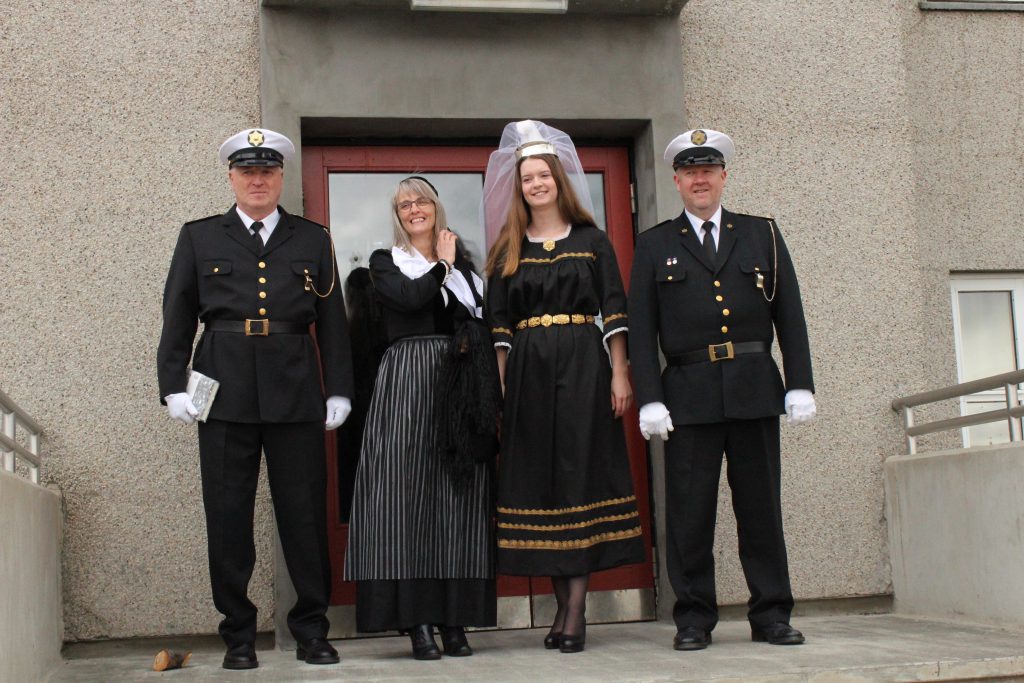
Works Cited
Birgisdóttir, Ásdís. Íslenskir Þjóðbúningar Kvenna Og Telpna. Translated by Steinunn J. Ásgeirsdóttir, Icelandic Handicrafts Association, 2004.
Helgadottir, Sigrún. Faldar og Skart. Opna, 2013.
Íslenskir Þjóðbúningurinn, buningurinn.is/english/.
